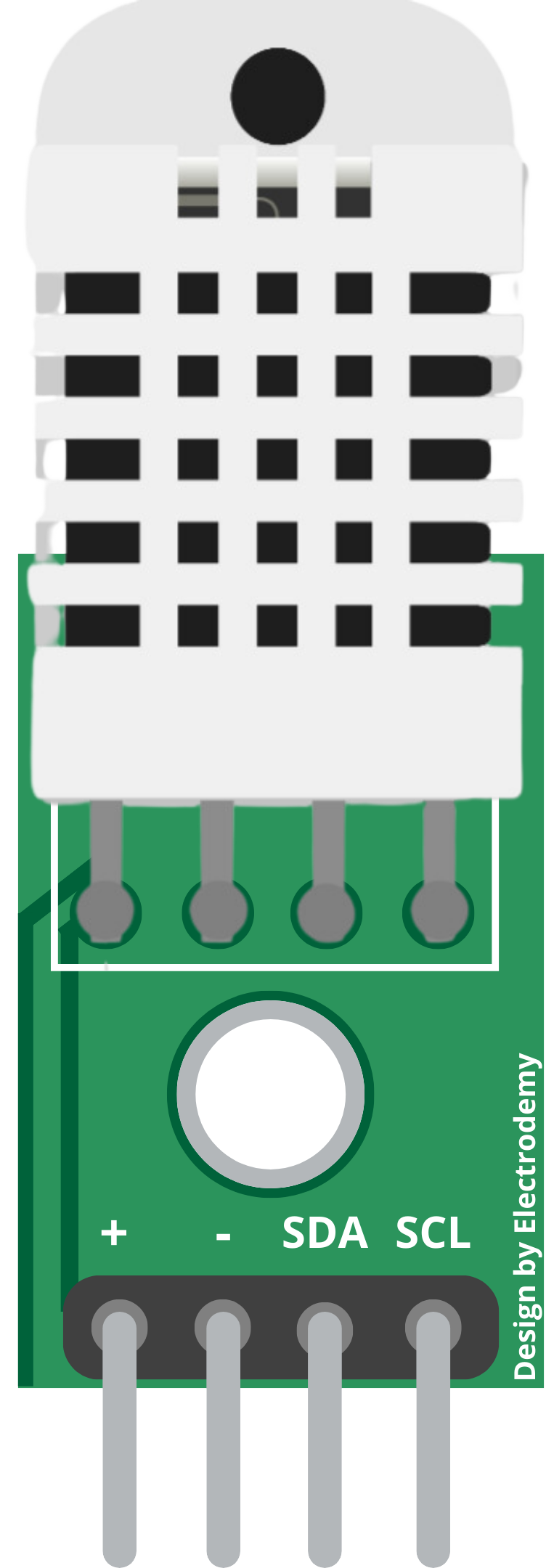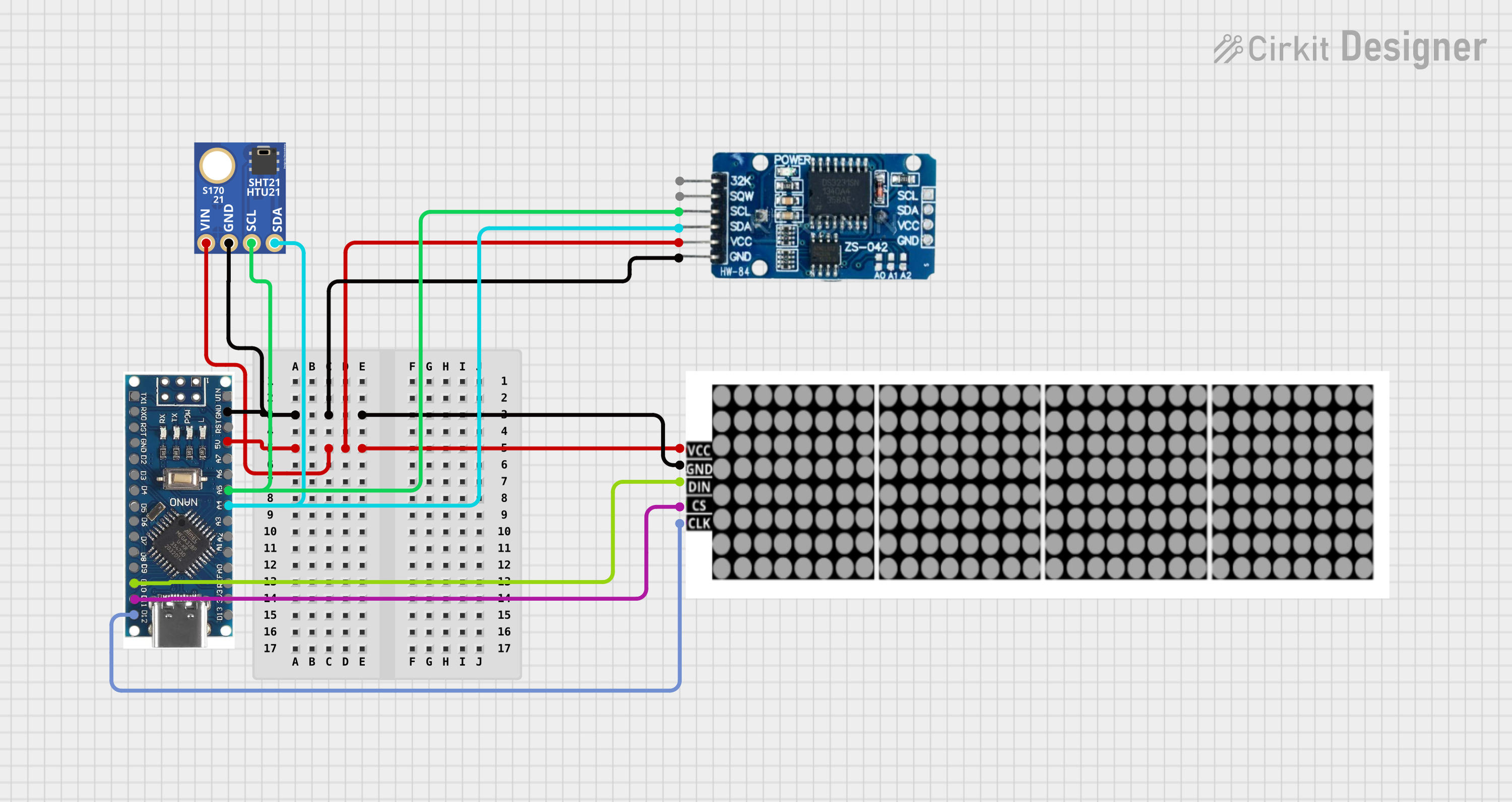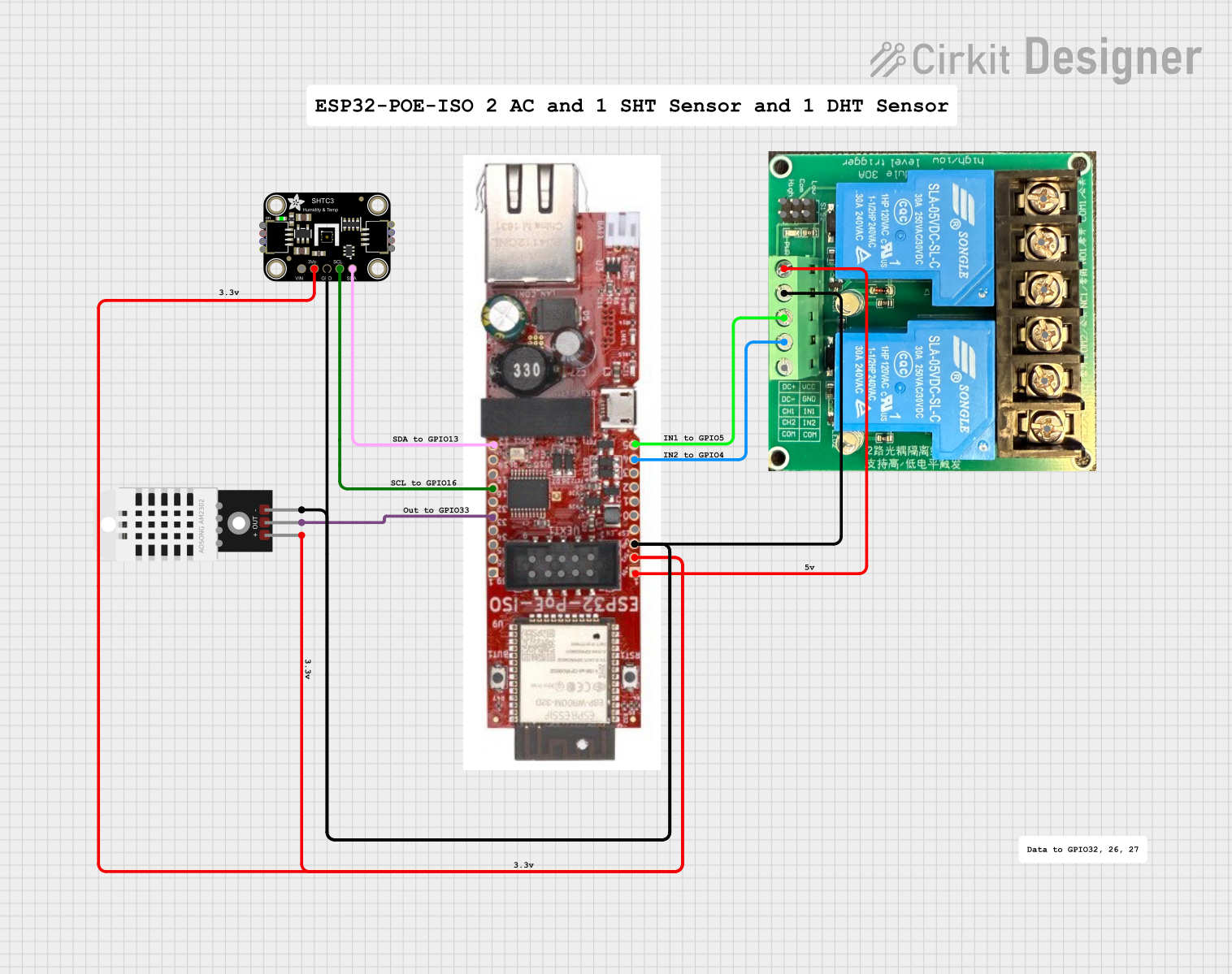
How to Use SHTC3: Examples, Pinouts, and Specs

 Design with SHTC3 in Cirkit Designer
Design with SHTC3 in Cirkit DesignerIntroduction
The SHTC3 is a high-precision digital sensor capable of measuring relative humidity and temperature. It is designed for high accuracy, low power consumption, and ease of integration, making it ideal for a wide range of applications including weather stations, HVAC systems, consumer electronics, and medical devices. Its small form factor and I2C communication protocol facilitate its use in space-constrained applications.
Explore Projects Built with SHTC3

 Open Project in Cirkit Designer
Open Project in Cirkit Designer
 Open Project in Cirkit Designer
Open Project in Cirkit Designer
 Open Project in Cirkit Designer
Open Project in Cirkit Designer
 Open Project in Cirkit Designer
Open Project in Cirkit DesignerExplore Projects Built with SHTC3

 Open Project in Cirkit Designer
Open Project in Cirkit Designer
 Open Project in Cirkit Designer
Open Project in Cirkit Designer
 Open Project in Cirkit Designer
Open Project in Cirkit Designer
 Open Project in Cirkit Designer
Open Project in Cirkit DesignerTechnical Specifications
Key Technical Details
- Relative Humidity Range: 0 to 100% RH
- Temperature Range: -40°C to 125°C (-40°F to 257°F)
- Humidity Accuracy: ±2% RH (typical)
- Temperature Accuracy: ±0.2°C (typical)
- Supply Voltage: 1.62V to 3.6V
- Current Consumption: 0.4µA (sleep mode), 15µA (average measurement)
- Interface: I2C
- I2C Address: 0x70 (7-bit)
Pin Configuration and Descriptions
| Pin Number | Name | Description |
|---|---|---|
| 1 | VDD | Power supply voltage (1.62V to 3.6V) |
| 2 | GND | Ground reference for the power supply |
| 3 | SDA | Serial Data Line for I2C communication |
| 4 | SCL | Serial Clock Line for I2C communication |
| 5 | NC | No Connection (do not connect) |
Usage Instructions
Integration into a Circuit
- Connect the VDD pin to a power supply within the range of 1.62V to 3.6V.
- Connect the GND pin to the ground of the power supply.
- Connect the SDA and SCL pins to the corresponding I2C data and clock lines on your microcontroller, such as an Arduino UNO.
- If necessary, use pull-up resistors on the SDA and SCL lines as per the I2C standard.
Best Practices
- Ensure that the power supply is stable and within the specified voltage range.
- Keep the sensor away from direct sunlight and sources of heat or moisture that could affect its readings.
- Use appropriate decoupling capacitors close to the sensor to minimize power supply noise.
- Avoid physical stress and contamination during handling and operation.
Example Code for Arduino UNO
#include <Wire.h>
#include <SHTC3.h>
SHTC3 shtc3(Wire);
void setup() {
Serial.begin(9600);
Wire.begin();
shtc3.begin();
}
void loop() {
if (shtc3.read()) {
Serial.print("Temperature: ");
Serial.print(shtc3.getTemperature(), 2);
Serial.println("°C");
Serial.print("Humidity: ");
Serial.print(shtc3.getHumidity(), 2);
Serial.println("%");
} else {
Serial.println("Sensor read failed!");
}
delay(1000); // Wait for 1 second between readings
}
Troubleshooting and FAQs
Common Issues
- Sensor not responding: Ensure that the I2C address is correct and that the SDA and SCL lines are properly connected with pull-up resistors.
- Inaccurate readings: Verify that the sensor is not exposed to heat sources or direct sunlight and that it has been given enough time to acclimatize to the environment.
- Noisy data: Check the power supply for stability and use decoupling capacitors as needed.
FAQs
Q: Can the SHTC3 sensor be used with a 5V system? A: The SHTC3 is rated for a maximum of 3.6V. A level shifter or voltage regulator is required to interface with a 5V system.
Q: How long does the sensor need to stabilize before providing accurate readings? A: The sensor typically requires a few seconds to stabilize after power-up. Refer to the datasheet for specific timing information.
Q: Is the SHTC3 waterproof? A: No, the SHTC3 is not waterproof. It should be protected from direct contact with water or other liquids.
Q: How can I calibrate the sensor? A: The SHTC3 comes factory-calibrated. However, for critical applications, you may perform additional calibration using a reference humidity and temperature source.
This documentation provides a comprehensive guide to the SHTC3 sensor, ensuring users can effectively integrate and utilize this component in their projects. For further details, consult the manufacturer's datasheet.